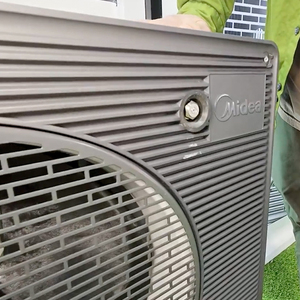I’ve got a copper roof customer looking into lightning protection. I’ve read/been told that air terminals are not necessary, that ground wires connected directly to the roof are adequate. I’m all for this idea, since I’ve had about 5 new roofs damaged by lightning protection guys face nailing their wire connectors thru a new copper roof not to mention drilled holes and sillycone caulk. I’ve found some info from the Copper Development Association to back me up, but it’s a little sketchy. Anybody got any input?
Discussion Forum
Discussion Forum
Up Next
Video Shorts
Featured Story

Learn how the pros keep their hand tools sharp without breaking the bank.
Highlights
"I have learned so much thanks to the searchable articles on the FHB website. I can confidently say that I expect to be a life-long subscriber." - M.K.
Fine Homebuilding Magazine
- Home Group
- Antique Trader
- Arts & Crafts Homes
- Bank Note Reporter
- Cabin Life
- Cuisine at Home
- Fine Gardening
- Fine Woodworking
- Green Building Advisor
- Garden Gate
- Horticulture
- Keep Craft Alive
- Log Home Living
- Military Trader/Vehicles
- Numismatic News
- Numismaster
- Old Cars Weekly
- Old House Journal
- Period Homes
- Popular Woodworking
- Script
- ShopNotes
- Sports Collectors Digest
- Threads
- Timber Home Living
- Traditional Building
- Woodsmith
- World Coin News
- Writer's Digest


















Replies
greencu,
I can't find my NFPA book and it's out of date anyway but your answer should be in the new one.
http://oldworlddistributors.com/cart_book8.html
KK
Good idea. I used to be a chimney sweep many years ago. Why didn't I think of that? Thanks.
The average lightning stroke is 20 kA and lasts only a few milliseconds at most, so the direct connection to the copper roof will work. There are a few percent of strokes in the 100's of kA, which could put a small hole in the copper that would need repair.
Give the info to the homeowner, they may opt for the possible once in a lifetime repair (unless you live in some areas of FL or CO.) vs. rods. The once in 200 year stroke could take out the lightning rod and leave lots of holes anyway.
Your ground wire size needs to be 4/0 at least if in a high area, and well anchored. Test I've run at 300 kA/12ms did not fuse the 4/0, but anything not anchored every 6 inches broke the wire due to magnetic forces. Rigid conduit is good or use Cu type L pipe.
Forget about even trying to protect against the biggest ever recorded lightning strike (NM) - it was 3 MA with a plasma channel 1 M in dia, tests run at that level break 500 MCM cable and would slag down a big hole in roof .
PS: tests run were for nuclear lightning for missle silos, your average home will see something like that from natural lightning less than once in a millenium.
There's lots of heat and very little light been spread on this general topic. [Not speaking about the above responses, but in general in the literature.] Basically, any large metal area on the building should be grounded (eg, metal siding should be grounded). In the case of a lightning strike, it won't prevent lightning damage to the copper, but it will very likely prevent a fire. Plus there's some theory that says (and some that doesn't) that by grounding the area you will actually reduce the chance of a lightning hit.
Re air terminals, there is very little theory that says they would do any good on a standing seam roof -- the uplifted seams provide a lot more "edge" area to discharge static. Air terminals might do a little bit of good on a corrugated roof.
The ideal way to do it would be to run ground wires the length of the roof on each side, making as much contact with the roofing in as many places as possible though absolutely solid contact probably isn't needed (though. I think you could get away with running the ground wires under the roofing, but code may say otherwise.
Edited 3/3/2004 1:27:19 PM ET by Dan
> Basically, any large metal area on the building should be grounded
A good idea not just for lightning, but also because nicked insulation on something might some day make it hot at 120 v. Grounding to the building's electrical system will trip a breaker and protect you if that happens.
-- J.S.
Yeah, that's the basic idea.